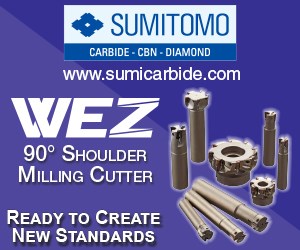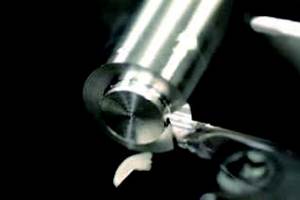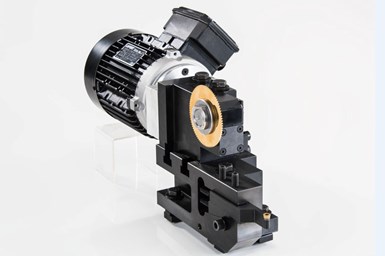
Rotary saw cutting (RSC) using a thin saw blade can save significant material costs compared to traditional single-point cutoff tools. (Photo credits: Watkins Saw Technologies)
If yours is a high-volume machine shop with legacy single- and multi-spindle screw machines, it’s possible you are considering rotary saw cutting (RSC). RSC can be a viable alternative to parting off compared to using a static, single-point cutoff tool. In short, RSC uses a thin, rotating, circular saw blade powered by a motorized attachment to part off turned workpieces while the barstock also rotates.
That said, Dirk Greulich, owner of Watkins Saw Technologies, notes that shops often consider using RSC for parting off only on a job-by-job basis. These are jobs in which parting off is the longest operation, cut flatness is an issue or material costs are very high. However, he suggests that shops can significantly benefit by standardizing on sawing for parting off operations for all work on these machines.
“Standardizing on sawing for parting off can pay dividends for myriad applications,” Greulich maintains. “It breaks down to simple math in terms of potential cost savings.”
He explains that RSC benefits include material savings using a thin saw blade instead of a wider single-point tool, in addition to:
- faster cutting;
- fewer tool changes;
- longer tool life;
- flatter cuts;
- minimal burr and no nib (reducing secondary operations); and
- very small chips.
In fact, given the much smaller kerf produced via sawing, material cost savings can be significant for both inexpensive and expensive barstock materials, he says. (This can range from 5% to 15%.) And while it might seem counterintuitive, higher cost savings come with longer parts because it’s important to consider the number of bars and pounds of material saved, not the percentage.
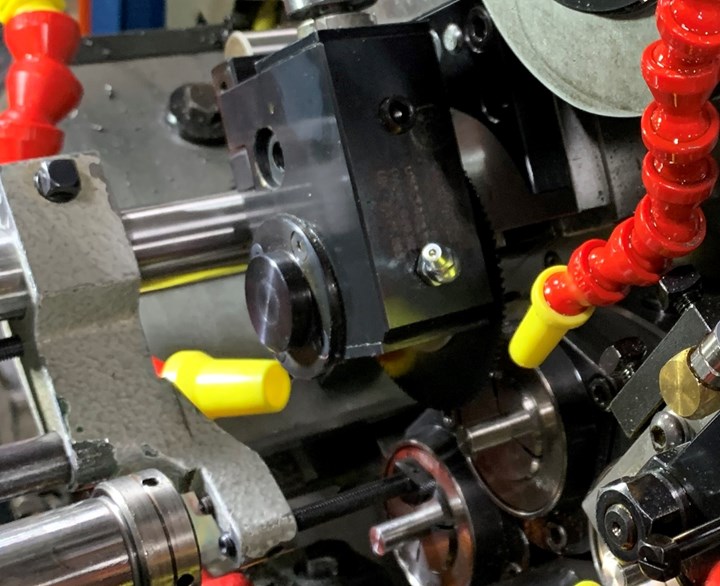
Leasing programs enable shops to realize the benefits of RSC, possibly on multiple machines, at a lower initial cost.
He offers these scenarios to consider for parts with a 12-second cycle produced from 1-inch-diameter 12L14 steel barstock:
- Part length of 0.75-inch: 8.5%/$9,000 material cost savings
- Part length of 1.5-inches: 6%/$12,000 material cost savings
- Part length of 2.5 inches: 3%/$13,000 material cost savings
And, overall, he suggests shops moving to RSC can save an average of $10,000 per machine per shift annually.
Given the much smaller kerf produced via RSC, material cost savings can be significant.
However, Greulich says the upfront cost of the requisite motorized attachment can sometimes be a barrier to entry for RSC. To help mitigate that, Watkins Saw Technologies offers interest-free, monthly financing and leasing programs such as its Kerf Cutter License Program (KCLP). This enables shops to realize the benefits of RSC productivity and performance improvements, possibly on multiple machines, at a lower initial cost (hundreds of dollars monthly compared to a motorized attachment cost that can range from $12,000 to $15,000).
And while these RSC systems are designed for single- and multi-spindle screw machines, the company is looking toward RSC offerings for CNC turning centers with live tooling stations. In this case, a low-cost arbor kit for an interface such as a 5C collet would be used because no motorized attachment would be necessary.
Related Content
Shop Sets its Sights on Precise Tool Alignment
A Wisconsin shop has found that visual tool alignment technology has improved tool life and surface finishes for its Swiss-type lathes while increasing throughput as well.
Read MoreBroaching Tool Technology For Lathes Used to Slot Inconel Parts
This shop finds value in using an indexable-insert-style broaching tool to create blind-hole slots in heat-treated Inconel aerospace parts on a CNC lathe.
Read MoreTool Path Improves Chip Management for Swiss-Type Lathes
This simple change to a Swiss-type turning machine’s tool path can dramatically improve its ability to manage chips.
Read MoreWhat Is Trochoidal Turning? How Might Shops Benefit From It?
While trochoidal milling might be a more well-known toolpath strategy, trochoidal turning can offer similar benefits such as high material removal rates especially for rough-turning operations.
Read MoreRead Next
A Tooling Workshop Worth a Visit
Marubeni Citizen-Cincom’s tooling and accessory workshop offers a chance to learn more about ancillary devices that can boost machining efficiency and capability.
Read MoreThe Lost Art of Mastery
There is value to honing and mastering a craft. But it takes time and experience.
Read MoreApproach PMTS 2025 With a ‘Process’ Mindset
High-volume machining operations are more apt to think about the entire process of producing parts beyond the machine tools themselves. All such technology is presented at the 2025 edition of the Precision Machining Technology Show.
Read More.png;maxWidth=970;quality=90)








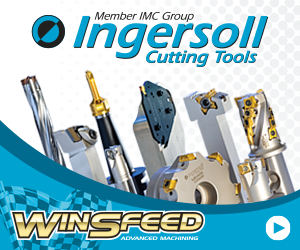


_Network-Zone_TAP-300x250-Final.jpg;maxWidth=300;quality=90)


